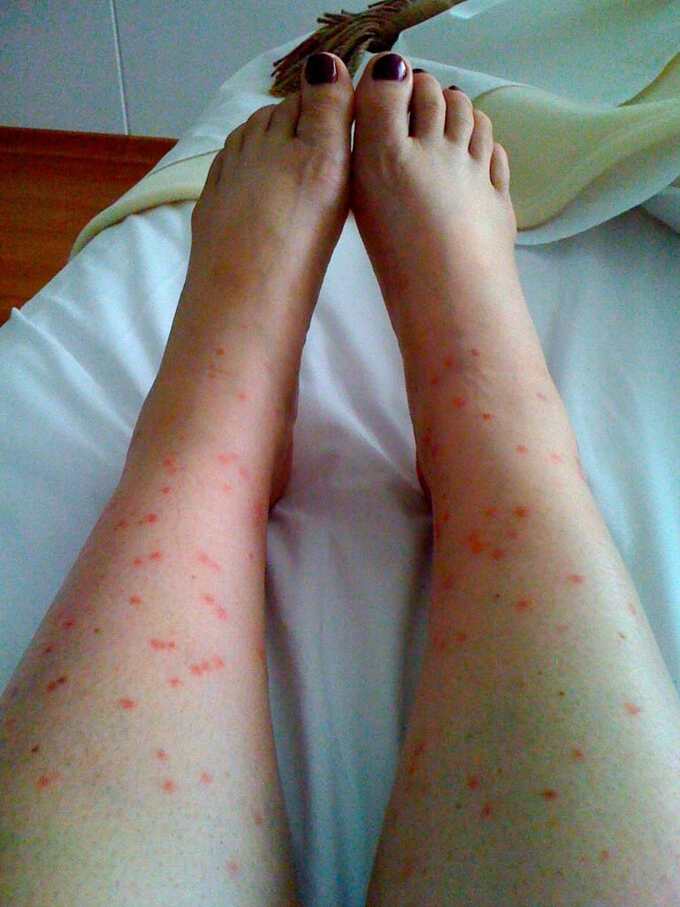Hi everyone and thanks to those who participated in our discussion about public transportation. This post is a wee bit late as I’ve just returned from South America. We certainly rode a variety of public transport there!
I may include reflections on that in future updates, but as a transitionary post, I’d like to talk about vaccines you should get (or consider getting) when you are travelling outside of North America or into under-developed nations where there may be a higher risk of picking up an ailment or travel bug.
Travel Health Clinics can be a big help
Both my travelling companion and I visited “Travel Health Clinics” in our respective cities. I suspect you will find one in every major city. These are staffed by knowledgeable medical professionals who have the latest info and advice with respect to your chosen destination. Or check with your doctor.
It’s important to plan ahead, as some shots like the Twinrix (used in prevent Hepatitis A & B) and the Yellow Fever shot must be given several days before you will be arriving in the region and you may need to wait a couple of weeks to get in and actually get your shots at the travel health clinic. You also need to plan for the additional cost, as these travel shots are not cheap and may cost you several hundred dollars. But the risk to your health far outweighs the additional cost to your trip.
As we were visiting jungle regions in both Ecuador and Peru, we were advised to get the Yellow Fever vaccination. Yellow fever is transmitted by a day-time biting mosquito. It is serious and can be fatal. You may be denied entry into Ecuador if you do not have the yellow-coloured “International Certificate of Vaccination of Prophylaxis” proving that we had received the shot.
Dengue Fever is another serious ailment transmitted by daytime biting mosquitoes, but there is no drug or immunization to prevent it, only drugs to treat the symptoms (which may include high and sudden fever, joint pains, nausea and a rash that shows itself several days after symptoms have surfaced.)
We used “Deep Woods Off” to prevent against bites, and I don’t think I got any mosquito bites, but I did get a multitude of bites from the tiny “no-seeum” sandflies that got me on a farm in Peru. The bites weren’t painful or itchy, but there certainly were a lot of them, making it impossible for me to wear cooler clothing once we got back to the comforts and “city life” of Lima. And there had only been a couple of hours when we wore shorts after showering from our jungle trek, but I obviously had not applied enough of the repellent and the sandflies are quick and plentiful, so while I was dining … so were they!

We were later told that baby oil is a good (and far less toxic) repellent that protects one from sandflies. Have you had any experience with that? Does it work?
Malaria is always a big scare
Malaria is another life-threatening condition that you can receive from mosquitoes, but the malaria carrying mosquitoes are a particular species that can generally only be encountered during dusk, dark and dawn. We chose to forego the malaria tablets because of the quantity one must take, the possible side effects, the fact that were only going to be in the “malaria zone” for a short period of time and the excessive cost of the tablets.
Symptoms of malaria include high and sudden fever, severe joint and muscle pains, nausea and chills. These symptoms may show themselves quickly, but can actually take up to a year following infection to show themselves, so if you’ve been to a malaria zone and develop a fever within a year of your travels, you are advised to quickly head to a hospital where you can be tested.
We also received the typhoid (good for 3 years) and tetanus/diphtheria (good for 10 years) shots to round out our preventative travel health repertoire. The Twinrix shot protects you for life once your body has built up an immunity to Hepatitis A&B, so it’s good to have your blood tested prior to departure if you’ve  already had the Twinrix to verify that you are protected.
We were surprised to encounter other travellers who had chosen to forego protecting their bodies with the recommended vaccines. It is indeed a personal choice. But as is the case with Ecuador, they have the right to refuse you entry into their country without the Yellow Fever vaccine, so be sure to check the requirements and recommendations to the destinations you are visiting before you leave home.
If you’ve had any health issues arise because you hadn’t taken the recommended precautions, let us know. Please share your thoughts on the subject of travel vaccinations, and remember to stay tuned for our next new post.








Are you planning to travel to Brazil or any other country in South America? Then you should take the yellow fever vaccine before traveling. Because yellow fever affected the people of South American countries at a high rate. You can visit a walk-in clinic or travel clinic for yellow fever vaccination. If you live in New York then you can visit Travel Clinic NY for yellow fever vaccination. This is one of the best clinics in New York that provide the best travel vaccination at a low cost.
Sandflies! Are they that huge you can punch them? Scary. On a side note, I’d love to agree with you on getting the appropriate vaccines prior to hopping into the airplane that will take you to your destination. They can be a little pricey and you may need to get them a head of time BUT they will definitely be worth it. Don’t let a teeny tiny insect bite mess with your getaway vacay.
Oh my GOODNESS – were those sandfly bites the single-most painful thing ever or what? Gosh – they even LOOK itchy on a picture!
I couldn’t agree more though with your thoughts on planning ahead and visiting your doctor prior to jetting off. Sage advice, Doreen.
PS. Hope the bites are better! 😛
Yes, indeed, the biters are long gone, Trinity. I think it only took a week for them to fade (for the most part.) But that was indeed firstly, horrific to look at, and also an inconvenience in not being able to wear sundresses and enjoy the lovely sun of Lima during our visit. I had a suitcase full of sundresses and was not able to wear one as my legs looked so horrible covered in all those bites!
Hey,
You are doing a good job. Keep it up. Keep providing us such a useful information.
Very comprehensive post! Not sure what to add here:-)
I’m very pleased to find this great post. I need to thank you for ones time for this fantastic read!!
Thanks,
Joel
Those sandfly bites looks nasty Doreen. Not sure if baby oil works better than repellent. I guess it makes it hard for the sandflies and mosquitoes to penetrate. As for me I always use repellent when traveling in tropical countries. And I always get the necessary vaccines before a trip to make sure no germs are taken there or brought back.
Great advice on vaccines Doreen, I always advise my clients to visit the travel clinic or speak to their family doctor before going overseas. Plus I send out a travel advisory for that particular country which gives them the resources to inform themselves on health and entry requirements.
Just a note on the Yellow Fever Vaccine certificate. An international certificate of vaccination showing inoculation against yellow fever is required from persons arriving within six days after leaving or transiting infected areas.
If you are arriving from North America, Canada or the US you are not required to have it as Canada and the US are not infected areas. But if you are travelling into areas that have known cases of it, yes get the vaccine! As you said in your blog that you were visiting the jungle and travelling from Peru so you could have been possibly be exposed to it , so you were wise to be vaccinated.
I went to the Galapagos and Quito a few years ago and I did not get any vaccines. The Galapagos is not known as an infected area so it wasn’t necessary. I did take my bug spray, long sleeve shirts and long pants though. I only had one bad experience with mosquitoes there as we were in a mangrove, which was a heavenly breeding ground for mosquitoes. But, to be fair I have experienced far worse mosquitoes here in Canada.
When in doubt always visit the travel clinic or check with the Canada Public Health agency/ http://www.phac-aspc.gc.ca/tmp-pmv/index-eng.php
Or http://www.voyage.gc.ca
The best advice is to be informed before you go anywhere far afield.
Denise – Travel Advisor
Thanks for the insightful comment, Denise. It’s so nice to have a Peru travel expert join the discussion.
Yes, the San Martin region of Peru where we stayed with the cacao farmers did have mosquitoes and there was risk of infection, so it was necessary for us to get the Yellow Fever inoculation. I agree. We definitely have more mosquitoes here in Canada, but fortunately they’re not the malaria-carrying kind. Although there are mosquitoes here in Manitoba that carry lyme disease, which I understand can also be fatal. So the key, as you say, is to fully protect oneself with bug spray, cover up with clothing and don’t be out at night when the culprits are at their worst!
Unfortunately, the sandflies that got my legs did so very quickly! I had bug stuff on, and we were only out a short while as we ate dinner in the communal dining area, but I did not reapply the lotion often enough! Live and learn.
I had my yellow fever shot ten years ago before going to Ethiopia. I have had experiences of swamp leeches. They hang on to unsuspecting traveler’s heel and suck blood. There is little pain so one wouldn’t notice. I can even write a post on this. Seeing Doreen’s legs infested with bites, I am reminded of this.
Yikes, Alex! I remember getting leeches at our cottage back when I was a kid. Not a pleasant experience.
The world is sure filled with challenges, but it’s still worth the risk of travelling to these places.
Thanks for joining the conversation.
Thanks for this very comprehensive list of health risks, Doreen. I’m glad to see you included dengue fever. I got dengue in Guatemala and the effects lasted for several months so it’s much more debilitating than people imagine. Because it’s an urban, day-biting mosquito many people are bitten in settings such as city cafes or sitting poolside at a resort. It’s worth taking your own insect spray containing Deet with you when you travel to tropical destinations.
Thanks for dropping by the blog, Michele, and for sharing your advice.
Wow! You are lucky to have survived Dengue! You must have been quickly diagnosed, as I understand it can be fatal if not caught in time. It’s amazing how a simple little bite can kill. We have West Nile Virus carrying mosquitoes here in Manitoba as well as lime disease carrying woodticks, so I guess we can get a life-threatening disease just by stepping outside our doors at home. That’s why, as you say, it’s important to protect ourselves with a repellent with as high a Deet content as we can find OR just cover up and avoid the chemicals to your body. Which of course is hard and unpleasant to do when we’re at a beach resort! C’est la vie of a travelling girl.
Hi Sherryl, and you’re welcome!
Yes, it seems that different shots are recommended for different parts of the world, and dependent on your intended destination and itinerary. So it’s also important to come equipped with a copy of your travel itinerary when you visit your travel health clinic.
As so many people are now travelling off the beaten path, we are becoming more and more exposed to an increasing number of diseases and health risks. But I’d much rather get the shots and go, versus staying home and watching TV. Cheers!
Wow Doreen! This is a great reminder for someone who is planning to travel abroad. I don’t think it would have occurred to me that it may be necessary to schedule shots weeks ahead of time and I had no idea they could be so expensive. I can’t imagine risking not having them though. Thanks so much for sharing your knowledge with us.
I am definitely in favour of vaccinations before travel and I have mine checked every couple of years by my doctor. Your post is a great reminder to travellers to double check things with their doctor/travel clinic before setting off or planning another adventure. I wasn’t aware that the Twinrix provided immunization for life, I thought it was for about 10 years, and then a booster would be required. I had it first done back in 2004 and just last year had a blood test to see if I was still immunized at the recommendation of my doctor. I still have the immunization so no booster was required. For life is much better than 10 years – the shots were somewhat expensive and my health plan would not cover it, I love a bargain so always happy to save money long term in any way possible. 🙂
You are right that the blood test will confirm whether we are still protected via the the Twinrix vaccine, but my doc told me that once your body has established the antibodies, they are with you for life. Great news! It is indeed complicated that each shot has its own lifespan, and that we need to check with our docs to confirm which shots we need and when.
Happy travels!
Thanks for joining us here, Susan.
It’s a great idea to have a check-list prior to taking a trip, and adding a visit to your doctor/travel health clinic is a really good idea if you’re heading to an under-developed country, each that may come with its own health risks and challenges.
Enjoy the long weekend, and hope to see you here again soon.
I couldn’t agree with you more. Your advise is something anyone who is planning a trip outside of their home country should read. I have traveled to various parts of the world and have check list I use before I travel. However, as a result of reading your blog I will be adding a few more things to my “to do” list before I travel next. Thanks for that. 🙂
We meet with hundreds of clients traveling to countries that absolutely require protection at the Journeys Travel Health Clinic in Winnipeg.
It is too bad that more people do not recognize they need protection even when they travel to common sunspot destinations like Mexico and the Caribbean nations.
Thanks for dropping into the blog, Ron.
Yes, I must say that Linda George of your travel health clinic was the one who advised me on my trip to South America and I found her insights and advice to be invaluable.
I think that often, people forego the travel shots hoping they’ll be OK just to avoid the additional cost of the shots. But preserving our health is definitely worth the additional cost and is something we should consider not only to protect ourselves, but our families and those we encounter in our travels.
Hi Bindhurani and thanks for visiting the blog.
I believe I incorrectly used the term sandflies in conjunction with the no-seeums that bit me in Peru. If you visit this link, you’ll see that is a common mistake. http://en.wikipedia.org/wiki/Sandfly
I believe I was bitten by the “biting midges” and that they do not carry disease. They are simply a very bad nuisance, and in my case, produced a multitude of awful-looking round red markings on my lower legs.
Thanks for the comment re the URL of the individual blog posts. I’ll check into fixing that, as I know Sherryl has my writer’s blog setup properly, and shows the name of each specific post vs a number in the URL.
It is always a good idea to get travel shots when you decide on a foreign trip.
When we are travelling, we always check with our family doctor. Also, carry the bug repellents and some common medicines like gravol and tylenol.
Do the sandflies spread any disease other than the marks on the skin?
You may like to change the p=1099 on your url of the post. Sherryl recently post an article about that in her blog.
I didn’t react to the bug bites the way Doreen did, but a week out of the jungle I came down with a fever, chills, and muscle aches. Doreen whisked me off to emergency in Quito and we spent the afternoon there as I was checked for malaria and dengue fever (you’re welcome to add the photo, Doreen). It turned out that the most likely cause was a urinary tract infection probably encouraged by the heat and humidity of the jungle. The care was excellent. Thank you to Hospital Vozandes Quito – “a la gloria de Dios y al Servicio del Ecuador” and thank you to my patient friend Doreen. It seems that having a traveling companion is equally if not more important than getting your shots.
Thank YOU, Virginia, for being such a terrific travelling companion. Despite the difficulties you encountered with your health (and there were more than you mentioned here) you never complained or looked for sympathy. You are a true traveller, and I am honoured to be inspired by your adventurous spirit. I look forward to our next adventure abroad!
Thanks for your comment, Laura, and for visiting the blog.
I, too, had brought the altitude sickness pills along with me but didn’t use them. We’d originally thought we’d be going to the Cusco area, but didn’t make it there.
The highest we got was 13,500 feet when ascending on the Teleferico (cable car) up the mountain in Quito. Really enjoyed that!
And yes, I had my suitcase inspected, too, but it was in Bogota, Columbia, as our flight from Quito took us there before heading back to Canada. At least the inspector was careful and didn’t disrupt the way I’d packed things too much. I was grateful for that.
I traveled to Ecuador 3 summers ago and found it to be a wonderful, welcoming country. I did not take malarial pills for that trip (I wasn’t going to an area with malaria) but did carry altitude sickness pills with me although I did not need them. Quite a few in our group did resort to some altitude sickness remedy so that’s something to keep in mind if you will be in the mountains (we were in Quito and the surrounding area).
Our local hospital actually has a travel department and is very efficient about what you need to travel where and when you need to get it. Be careful passing on malarial drugs when you travel – they aren’t as bad as you might think, and at least my insurance covered them after my deductible. I’ve traveled to Haiti 3 times and took them each time. Your dreams will be freaky BUT better that than malaria! I was not in the jungle in Ecuador so it wasn’t required but I did get yellow fever shot but was not asked to produce proof when I entered the country.
Odd note about leaving Ecuador: be prepared to have your bags and your person searched by drug sniffing dogs. It’s interesting to say the least and probably one of the weirdest experiences I’ve had in my decades of travel!
Hi Doreen: “Beam me up “Spotty”.
Excellent advice. D. & I will be visiting the travel health clinic at least a couple of months before our next big trip.
We both were inundated with midge bites while in St. Martin last year. Tremendously itchy for me. D.’s didn’t come out till we were coming home, and he wasn’t itchy at all!
Very much anticipate hearing bits (not bites) and pieces of what you’ve experienced..
Welcome home!
LL
Thanks for your comment, Linda. Yes, I was definitely “spotty” for at least a week. It’s amazing how those tiny bugs can create such a scene!
And yes, how differently each of us reacts to the bites. Those I was with were bitten, but didn’t get the red reaction that I did. Oh, well. The bites are gone now and I’m looking forward to a nice spring here on the Prairies.
Next week will be the 1st post on Peru. Stay tuned!
Wow, talk about bug bites! Yikes! Hope they’ve healed now that you’re home.
We live in London, ON and we have a travel doctor here too. We got our Hep shots before taking a cruise and for my trip to Israel. I agree that it’s very important to get immunized for trips outside of your country that pose potential problems. It’s not worth the risk.
Hi Suzanne and thanks for your comment.
Yes, we’d gotten our first round of travel shots back in 2001 when we took the Panama Canal cruise, as we were visiting Central American countries and it was recommended. It’s nice that some of the shots immunize you for life (like the Twinrix) and that some shots are good for 10 years. Too bad they all weren’t good for that long.